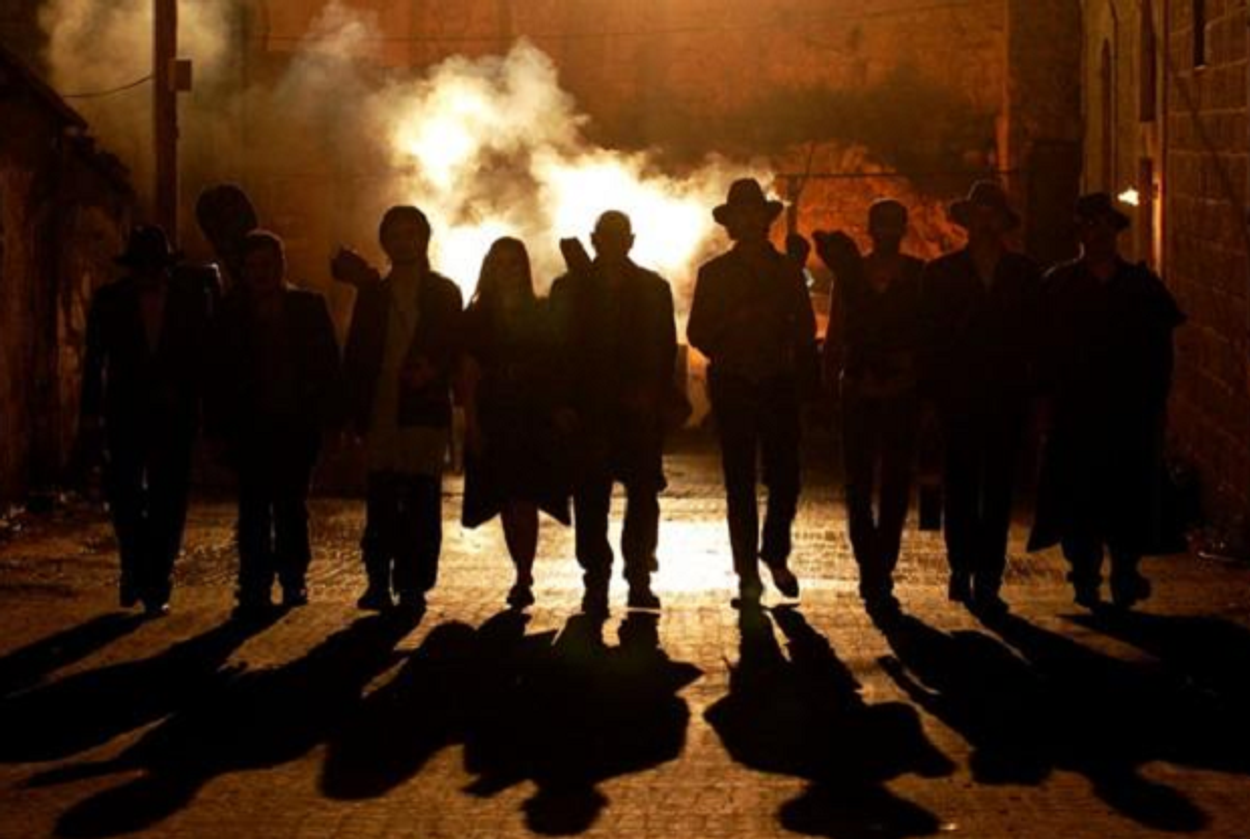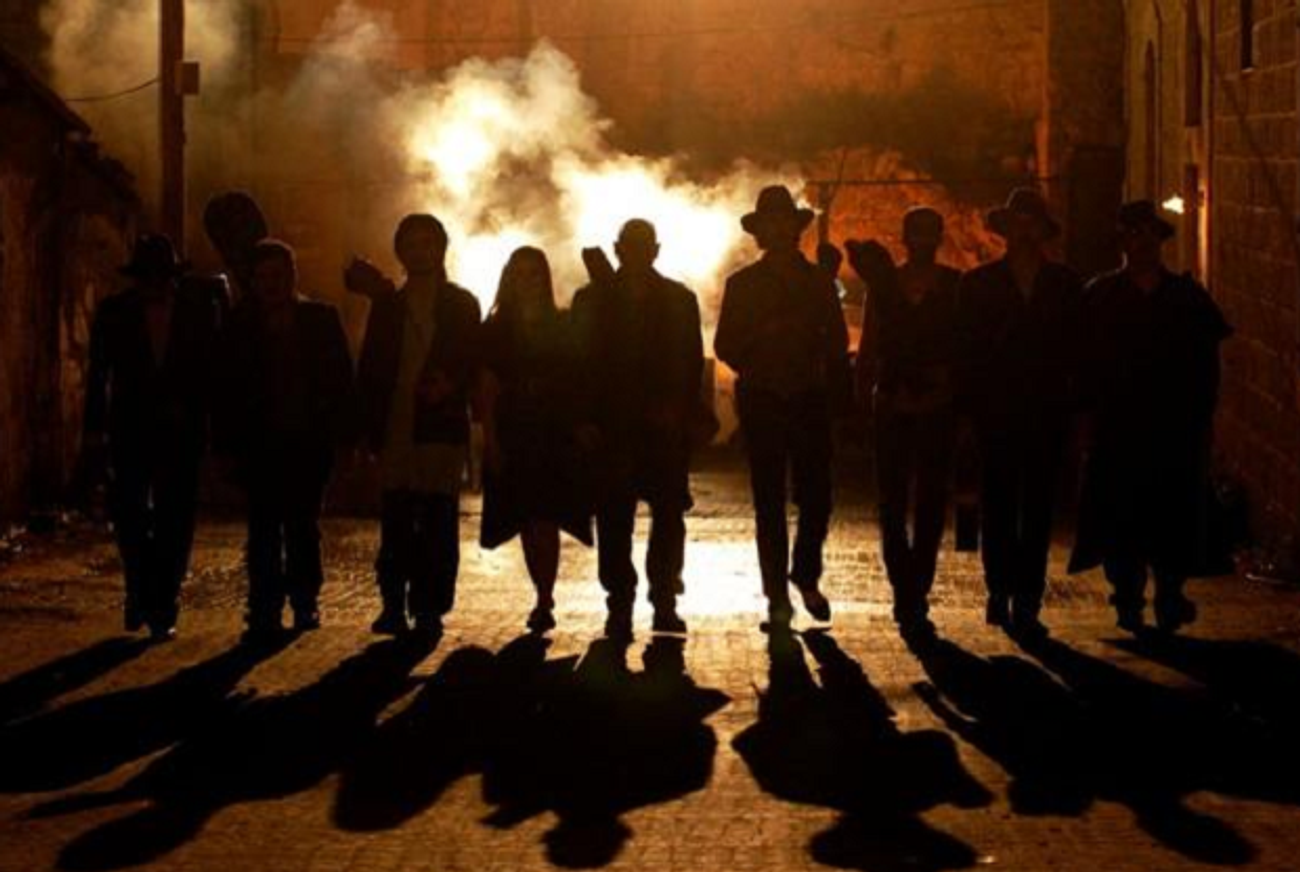My Mother’s Film Review: ‘The Ballad of the Weeping Spring’
Beni Torati’s flick takes from the likes of Kurosawa and Sturges




Seven Samurai was born of Akira Kurosawa who fathered John Sturges’ The Magnificent Seven who then might have fathered The Blues Brothers by John Landis, and in turn, they all fathered Beni Torati’s The Ballad of the Weeping Spring. All of them center on the need to reunite/recreate a group that can accomplish the improbable.
The plot summary for The Ballad of the Weeping Spring is: Twenty years after a car accident, for which he was held responsible, the legendary tar (lute) player Yosef Tawila is running a bar in northern Israel. The son of his band mate Avram–also Yosef’s best friend and another survivor from the crash–arrives with the news that his father is dying. He brings notations for “The Weeping Springtime Symphony,” a piece Yosef and Avram worked on together but never played. Yosef decides to reunite the remaining members of the band to grant his dying friend’s final wish—and perhaps to heal his own tortured soul. This is a riveting drama with outstanding music.
More than a few scenes will be familiar. In The Magnificent Seven, the Western remake of the Seven Samurai, a Mexican village is periodically raided for food and supplies by bandits. Taking what meager goods they have left, the village leaders ride to a town just inside the American border hoping to barter for weapons to defend themselves. While there, they encounter a veteran gunslinger from Dodge named Chris. After listening to their tale, Chris suggests that the village hire more gunfighters as they would be cheaper than guns and ammunition. The village men relentlessly try to convince Chris to be their gunman; while at first he agrees just to help them find men, eventually he decides to help them out in person as well as finding six other men to join them, despite the poor pay offered. And for good measure, The Blues Brothers is also about a compelling need to reunite their rhythm and blues band and for the band to play a benefit concert.
In Weeping Spring, it is the gathering of the players that is the story, with the background being supplied by the incredible Iranian music, described as “a pervasive pan-ethnic sound.” Yosef is often recognized for the musician he once was, which makes the gathering process a bit smoother. Since two of the original band were killed in the car crash, Yosef, with Avram (the son) at his side, must look for the best talent he can find – in bars, dives, the red light district, small villages, but once he finds the musician, the musician is more than eager to help – if he can get away from the mob boss, knife-wielding wife, blackmailer, and the like. It seems that the musicians do not keep the best of company. With the original singer Margaret now confined to a wheelchair, her daughter Tamara joins the group, having inherited her mother’s talent.
The location is Israel but no places are named; the time is the present, more or less, but no dates are specified. The world outside of the movie has no bearing on the movie. It is the making of music that is important, and the music is perhaps the leading character, always being pursued by Yosef. No question that the movie is derivative (look for the scene copped from Indiana Jones as well as the echoes of the others), but this is one of those times, when the offspring succeeds, and in some way goes beyond the parent. It has it all–music, drama, comedy, romance–all done with a deft hand. Most of the movie occurs at night–the final scene is in a candle-lit cave, but the feeling it generates is not dark, perhaps because the music is so engaging.
It is no surprise that it was nominated for nine Israeli Academy Awards, with wins for Best Original Music, Best Original Soundtrack, Best Production Design and Best Costume Design. Catch it a film festival near you.
Adam Chandler was previously a staff writer at Tablet. His work has appeared in the New York Times, the Wall Street Journal, the Atlantic, Slate, Esquire, New York, and elsewhere. He tweets @allmychandler.